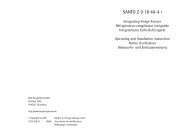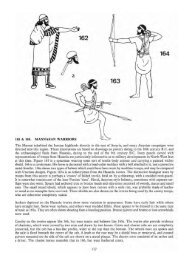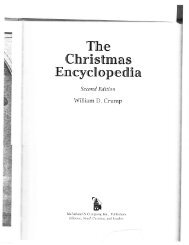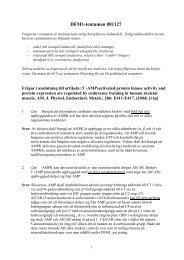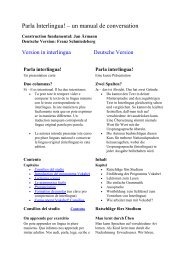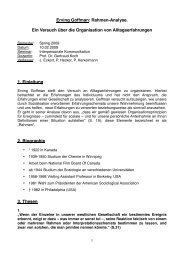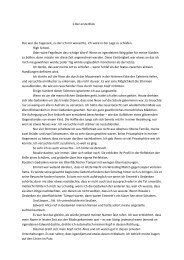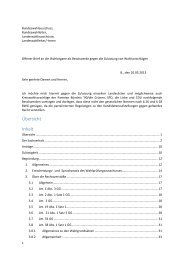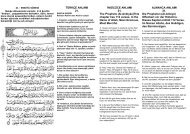lwIP - A Minimal TCP/IP implementation - Wikia
lwIP - A Minimal TCP/IP implementation - Wikia
lwIP - A Minimal TCP/IP implementation - Wikia
Create successful ePaper yourself
Turn your PDF publications into a flip-book with our unique Google optimized e-Paper software.
10 <strong>TCP</strong> PROCESSING 10.2 Data structures<br />
Application<br />
Application layer<br />
tcp_write()<br />
tcp_receive()<br />
tcp_enqueue()<br />
tcp_process()<br />
Transport layer<br />
tcp_output()<br />
tcp_input()<br />
ip_route()<br />
ip_output_if()<br />
ip_input()<br />
Internetwork layer<br />
netif->output()<br />
Network interface layer<br />
Figure 9. <strong>TCP</strong> processing<br />
When an application wants to send <strong>TCP</strong> data, tcp write() is called. The function tcp write()<br />
passes control to tcp enqueue() which will break the data into appropriate sized <strong>TCP</strong> segments<br />
if necessary and put the segments on the transmission queue for the connection. The function<br />
tcp output() will then check if it is possible to send the data, i.e., if there is enough space in the<br />
receiver’s window and if the congestion window is large enough and if so, sends the data using<br />
ip route() and ip output if().<br />
Input processing begins when ip input() after verifying the <strong>IP</strong> header hands over a <strong>TCP</strong><br />
segment to tcp input(). In this function the initial sanity checks (i.e., checksumming and <strong>TCP</strong><br />
options parsing) are done as well as deciding to which <strong>TCP</strong> connection the segment belongs. The<br />
segment is then processed by tcp process(), which implements the <strong>TCP</strong> state machine, and any<br />
necessary state transitions are made. The function tcp receive() will be called if the connection<br />
is in a state to accept data from the network. If so, tcp receive() will pass the segment up to<br />
an application program. If the segment constitutes an ACK for unacknowledged (thus previously<br />
buffered) data, the data is removed from the buffers and its memory is reclaimed. Also, if an ACK<br />
for data was received the receiver might be willing to accept more data and therefore tcp output()<br />
is called.<br />
10.2 Data structures<br />
The data structures used in the <strong>implementation</strong> of <strong>TCP</strong> are kept small due to the memory constraints<br />
in the minimal system for which <strong>lw<strong>IP</strong></strong> is intended. There is a tradeoff between the<br />
complexity of the data structures and the complexity of the code that uses the data structures,<br />
and in this case the code complexity has been sacrificed in order to keep the size of the data<br />
structures small.<br />
The <strong>TCP</strong> PCB is fairly large and is shown in Figure 10. Since <strong>TCP</strong> connections in the LISTEN<br />
and TIME-WAIT needs to keep less state information than connections in other states, a smaller<br />
PCB data structure is used for those connections. This data structure is overlaid with the full PCB<br />
structure, and the ordering of the items in the PCB structure in Figure 10 is therefore somewhat<br />
awkward.<br />
The <strong>TCP</strong> PCBs are kept on a linked list, and the next pointer links the PCB list together.<br />
The state variable contains the current <strong>TCP</strong> state of the connection. Next, the <strong>IP</strong> addresses and<br />
port numbers which identify the connection are stored. The mss variable contains the maximum<br />
segment size allowed for the connection.<br />
The rcv nxt and rcv wnd fields are used when receiving data. The rcv nxt field contains<br />
the next sequence number expected from the remote end and is thus used when sending ACKs<br />
10



